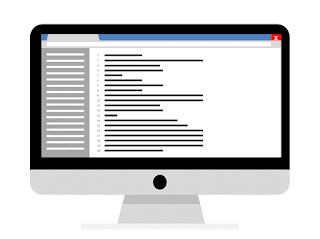Introduction
Oracles are systems that may give external data sources to Ethereum smart contracts. The term “oracle” comes from Greek mythology, where it mentioned a person in communication with the gods who could see dreams of the future. An oracle is a system that can reply to questions that are external to Ethereum in the situation of blockchains. Preferably oracles are systems that are trustless, meaning that they do not want to be trusted as they operate on decentralized principles.
Description
Ethereum Virtual Machine (EVM) is an important component of the Ethereum platform, with its capability to perform programs and update the state of Ethereum, forced by consensus rules, on any node in the decentralized network. Ethereum Virtual Machine performance must be entirely deterministic and based only on the shared context of the Ethereum state and signed transactions in direction to sustain consensus. This has two mainly significant costs:
The first is that there may be no intrinsic source of randomness for the EVM and smart contracts to work with; The second is that extrinsic data may only be presented as the data payload of a transaction.
Let’s unload those two significances additional. To understand the ban of a truly random function in the EVM to deliver randomness for smart contracts, study the effect on efforts to attain consensus after the execution of such a function:
Node A would perform the command and store 3 on behalf of the smart contract in its storage, though node B, executing the same smart contract, would store 7 in its place. Therefore, nodes A and B would derive diverse decisions about what the resultant state should be, in spite of having run accurately the similar code in the same context. Definitely, it could be that a changed resulting state would be realized every time that the smart contract is assessed. For itself, there would be no way for the network, with its assembly of nodes running freely everywhere in the world, to ever come to a decentralized consensus on what the subsequent state should be. Actually, it would get much inferior to this example very quickly, as knock-on effects, including ether transfers, would build up exponentially.
The pseudorandom functions are not sufficient for many applications because cryptographically safe hash functions, which are deterministic and therefore can be, and really are, part of the EVM. Precedes a gambling game that pretends coin flips to decide bet payments that desire to randomize heads or tails. A miner may take again by playing the game and only with their transactions in blocks for which they will win. So how do we become about this problem? Fine, all nodes may agree on the insides of signed transactions, so extrinsic information, including sources of randomness, price information, weather forecasts, etc., may be presented as the data part of transactions sent to the network. Though, such data simply cannot be trusted, as it comes from unverifiable sources. By itself, we have just delayed the problem. We use oracles to try to solve these problems.
Oracle Use Cases and Examples
Oracles make available a trustless or as a minimum near-trustless approach of getting extrinsic information. For example, the results of football games, the price of gold, or actually random numbers, onto the Ethereum platform for smart contracts to use. They may also be used to communicate data firmly to DApp frontends in a straight line. Oracles can therefore be believed of as a mechanism for joining the gap between the off-chain world and smart contracts. Permitting smart contracts to apply contractual contacts based on real-world events and data widens their scope radically. Though, this may also present external risks to Ethereum’s security model.
Several oracles offer data that is specific to an exact private data source, for example, academic certificates or government IDs. The basis of such data, for instance, a university or government department, is fully trusted, and the truth of the data is subjective. The truth is only resolute by appeal to the authority of the source. Several further examples of data that might be delivered by oracles include:
Arbitrary numbers or entropy from corporeal bases for instance quantum and thermal processes: e.g., to fairly select a winner in a lottery smart contract.
Parametric triggers indexed to natural hazards: e.g., prompting of catastrophe bond smart contracts, for example, Richter scale dimensions for an earthquake bond.
Exchange rate data: e.g., for true fixing of cryptocurrencies to sanction currency
Investment markets data: e.g., pricing bags of tokenized assets or securities
Standard reference data: e.g., including interest rates into smart financial results
Time and pause data: for occasion triggers beached in exact time dimensions
Weather data: e.g. Insurance premium calculations built on weather forecasts
Political actions: for forecast market resolution
Sporting events: for estimate market resolution and imaginary sports bonds
Damage verification: for insurance contracts
Events occurring on other blockchains: interoperability functions
Ether marketplace price: e.g., for authorized gas price oracles
For more details visit:https://www.technologiesinindustry4.com/2021/05/why-oracles-are-needed.html
